![]()
![]()
![]()
Use LEFT and RIGHT arrow keys to navigate between flashcards;
Use UP and DOWN arrow keys to flip the card;
H to show hint;
A reads text to speech;
52 Cards in this Set
- Front
- Back
|
The Tetons and the Snake River, Grand Teton National Park
Ansel Adams 20th Century Photographs |
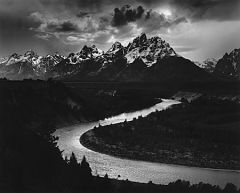
What is name, author, and period/classification of this piece?
|
|
|
Kaufmann House, Bear Run (Falling Water)
Frank Lloyd Wright 20th Century Prairie School of Architecture |

What is name, author, and period/classification of this piece?
|
|
|
Bauhaus
Walter Gropius 20th Century Minimalist/Internationalist School of Architecture |
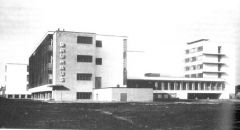
What is name, author, and period/classification of this piece?
|
|
|
Wivenhoe Park, Essex
John Constable English Romanticism |
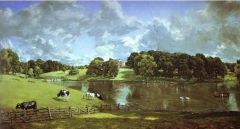
What is name, author, and period/classification of this piece?
|
|
|
Gare Saint-Lazare, 1877
Claude Monet Impressionism |

What is name, author, and period/classification of this piece?
|
|
|
The Kiss
Auguste Rodin 20th Century Sculpture |
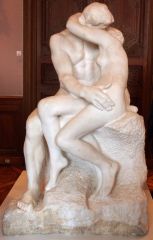
What is name, author, and period/classification of this piece?
|
|
|
Liberty Leading the People
Eugene Delacroix French Romanticism |
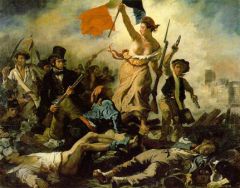
What is name, author, and period/classification of this piece?
|
|
|
Au Moulin Rouge
Henri Toulouse Lautrec Post Impressionism |
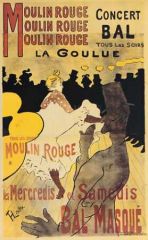
What is name, author, and period/classification of this piece?
|
|
|
L'Arc d'Triomphe
Rude French Romantic Sculpture |

What is name, author, and period/classification of this piece?
|
|
|
The Anatomy Lecture of Dr. Tulp
Rembrandt van Rijn Dutch Baroque |
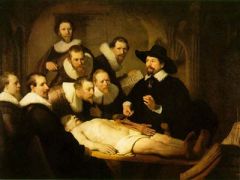
What is name, author, and period/classification of this piece?
|
|
|
David
Michelangelo Buonarotti Renaissance |
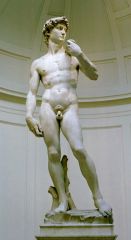
What is name, author, and period/classification of this piece?
|
|
|
Self-Portrait
Pablo Picasso Blue Period |
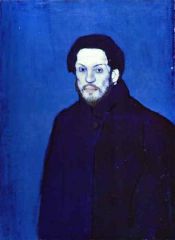
What is name, author, and period/classification of this piece?
|
|
|
Self-Portrait
Pablo Picasso Cubism |
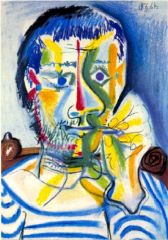
What is name, author, and period/classification of this piece?
|
|
|
Where Do We Come From? What Are We? Where Are We Going?
Paul Gauguin Post-Impressionism |

What is name, author, and period/classification of this piece?
|
|
|
The Raft of the Medusa
Theodore Gericault French Romanticism |
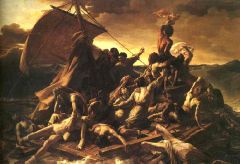
What is name, author, and period/classification of this piece?
|
|
|
Lavender Mist
Jackson Pollock Abstract Expressionism |
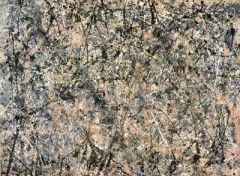
What is name, author, and period/classification of this piece?
|
|
|
Time Transfixed
Rene Magritte Surrealism |
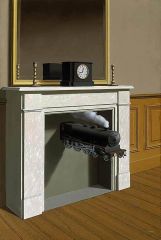
What is name, author, and period/classification of this piece?
|
|
|
Harlequin's Carnival
Joan Miro Surrealism |
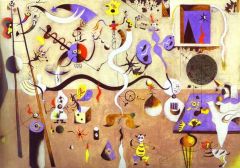
What is name, author, and period/classification of this piece?
|
|
|
Sistine Chapel
Michelangelo Buonarotti Renaissance |
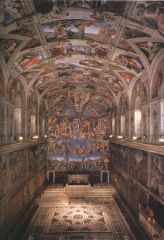
What is name, author, and period/classification of this piece?
|
|
|
Arena Chapel
Giotto di Bondone Late Medieval |
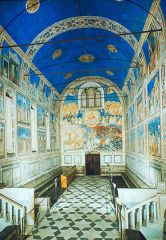
What is name, author, and period/classification of this piece?
|
|
|
The Resurrection
El Greco (Domenikos Theotokopoulos) Mannerism |
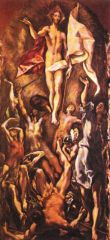
What is name, author, and period/classification of this piece?
|
|
|
Saturn Devouring His Children
Goya Black Period/No classification |
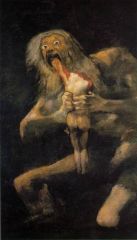
What is name, author, and period/classification of this piece?
|
|
|
The Rape of Europa
Titian (Tiziano Vecellio) Renaissance |
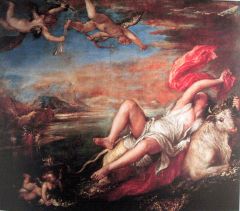
What is name, author, and period/classification of this piece?
|
|
|
Mannerism
|
Reaction against idealized paintings of Renaissance, transition between Renaissance and Baroque. Figures are very elongated.
|
|
|
Medieval
|
Mindset--you can't look at God, can't approach him, etc. Very flat.
|
|
|
Surrealism
|
Product of Sigmund Reud, tried to paint and loose the unconscious mind
|
|
|
Abstract Expressionism
|
Evoke emotion but not with tangible things--abstractly
|
|
|
Post Impressionism
|
Refocus on light and color but reintroduce story and narrative
|
|
|
Cubism
|
take an image, break it in geometric shapes/planes, and reassmble it in a new and different way
|
|
|
Renaissance
|
centered on man and man's power, man's ability to be close to God (man made in image of God)
|
|
|
chiaroscuro
|
dramatic contrast between light and dark (see Anatomy Lecture of Dr. Tulp)
|
|
|
French Romanticism
|
focus on the people
|
|
|
English Romanticism
|
focus on nature
|
|
|
Impressionism
|
capture the sensory experiences of the moment without preconcieved notions
|
|
|
Minimalist School of Architecture
|
Function over form, structure left visible
|
|
|
Prairie School of Architecture
|
architecture in harmony with nature around it, blends in with surroundings. Form over function
|
|
|
Philosophy
|
the act of stating as clearly and convincingly as possible, what we believe and what we believe in
|
|
|
Tools of Philosophy
|
Articulation, Argument, Analysis, Synthesis
|
|
|
Articulation
|
putting ideas in clear, concise, and readily understandable language
|
|
|
Argument
|
supporting ideas to establish conclusions and overcome objections
|
|
|
Analysis
|
understanding an idea by clarifying its components
|
|
|
Synthesis
|
gahtering different ideas together in a single, unified vision or theme
|
|
|
Areas of Philosophical Inquiry
|
Metaphysics, Ethics, Epistemology, Logic, Philosophical Theology, Political Philosophy, Aesthetics
|
|
|
Metaphysics
|
theories of relaity and the ultimate nature of all things, seeking a unified view of the universe. ALSO called ONTOLOGY, the study of being.
|
|
|
Ethics
|
theories about good and bad, right and wrong, and the principles of morality
|
|
|
Epistemology
|
theories about knowledge, what we know and how we know it--poses the question what is truth?
|
|
|
Logic
|
Ideas about thinking and reasoning, uses syllogisms
|
|
|
Syllogism
|
A tool of logic (developed by Aristotle) that allowes one to draw valid (but not necessarily true) conclusions from two premises.
1. Major Premise 2. Minor Premise 3. Conclusion DEDUCTION Prove a syllogism by proving its major premise (by using another syllogism). Limits to logic. |
|
|
Philosophical Theology
|
theories that address the nature of religion, God and the reasons for God's existence (or non-existence)
|
|
|
Political Philosophy
|
theories about the nature of society and government, includes ideas about the ideal society (utopia)
|
|
|
Aesthetics
|
theories relating to art, asks questions about the nature of beauty and its expression
|
|
|
Elements of Art
|
Composition, Movement, Unity and Balance, Color and Light/Dark Contrast, Mood
|

